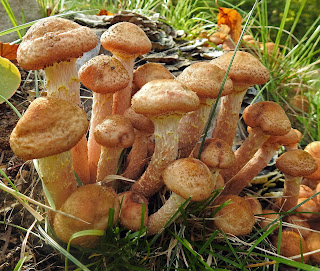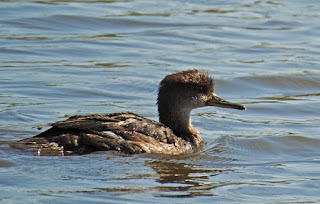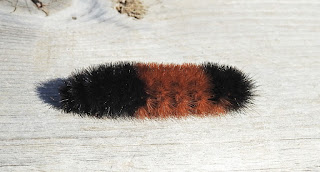NATURE
MONCTON INFORMATION LINE, September 27, 2019 (Friday)
Please advise editor at nelsonpoirier435@gmail.com if any errors are noted in wording or
photo labeling.
For more information on Nature Moncton, check into the website at www.naturemoncton.com
For more information on Nature Moncton, check into the website at www.naturemoncton.com
Transcript by: Louise Nichols nicholsl@eastlink.ca
To respond by e-mail, please address
your message to the information line editor nelsonpoirier435@gmail.com.
** Last call
for tomorrow’s (Saturday’s) field trip to the Mapleton Acadian Forest Eco
Reserve. The meeting time is 12:00 noon
in Elgin at the Elgin Eco Park which is right in the town and well-marked and
signed. We will be led by Idella Lazar,
a local historian, meeting her in her red Toyota at the Elgin Eco Park, and
we’ll go from there to the trail head.
The trail through the woods is sometimes level and sometimes up and
down, so wear appropriate footwear and dress for the weather which Mother
Nature advises will be great. The fall
leaf colour show should be underway as well.
The drive to Elgin takes approximately one hour. Suggested routes are to take Rte 895 at Anagance
or Rte. 905 at Petitcodiac. Both lead to
Elgin, but the Rte. 905 from Petitcodiac may be the preferred one. The hike will be approximately 3 hours or
less, and then we will head to the Women’s Institute Turkey Supper nearby for
fellowship and chatter and a great home-cooked meal. To check out this special nature preserve,
click on the link which I’ve attached below.
A map is attached with the photos.
A contact number if anyone is late or loses the group will be
866-2752. This notice is slightly
different from the write-up on the website at www.naturemoncton.com under Upcoming
Events.
** WINTERBERRY HOLLY is a bush that grows well at
Hay Island. Aldo Dorio photographed a
bush well-laden with berries that will cling onto the leafless branches all
winter. They’re becoming more obvious
now as they ripen red and the leaves fall.
They do prefer to grow in wet areas.
They don’t seem to be the berry of first choice of bird connoisseurs,
but they usually disappear over the winter.
Aldo shows a photograph of the bush and the ripened plump berries up
close.
The Black-bellied Plovers are very much in their
late season plumage. Aldo Dorio’s photos show that nicely. Note the shorter
primary projection in one view compared to American Golden Plover.
** Brian Stone did a short Mapleton Park walk on
Thursday and as usual saw lots of activity.
The four HOODED MERGANSERS [Harle couronné] are still
present in the main pond as well as a seemingly out of place DOUBLE-CRESTED CORMORANT
[Cormoran à aigrettes] and an expected GREAT BLUE HERON [Grand
Héron]. The fall
colours of the leaves of hardwood trees are coming on at the park, and
seemingly abundant WOOLY BEAR CATERPILLARS were motoring about as well as a SPOTTED
TUSSOCK MOTH CATERPILLAR.
** It’s hard not to go on about mushrooms after
sudden mushroom rains. I came across
hundreds of HONEY MUSHROOMS just emerging on Thursday. This choice edible loves stumps. Our neighbours cut some hardwood trees a year
or so ago, and all the Honey Mushrooms are delighted to start working on
recycling the stumps. I’m attaching a
few photos to show them as they are just emerging. They will expand and get larger. The spore print is pale yellow whereas the Pholiota
group that can look somewhat similar sometimes has a distinct dark brown spore
print to easily differentiate the two.
** A few late season moths that visited the moth
light on Wednesday night were the AUTUMNAL MOTH, FALSE HEMLOCK LOOPER and the
MAPLE SPANWORM MOTH. The Maple Spanworm
Moth has the behaviour of perching to look like a leaf as its protective
mechanism. These moths are all
medium-sized moths.
** This week’s Sky-at-a-Glance is added to this
edition, courtesy of sky guru Curt Nason.
This
Week’s Sky at a Glance, 2019 September 28 – October 5
Small constellations tend to get overlooked unless, like Delphinus the Dolphin, they have fairly bright stars or an eye-catching pattern. Aries the Ram and cleverly named Triangulum aren’t quite as pretty as Delphinus but they do get noticed. Okay, Triangulum isn’t pretty but it is acute, situated below Andromeda in mid-evening. Below it is brighter Aries, which resembles a somewhat squashed triangle.
In mythology, the god Hermes sent a flying, golden ram to rescue a prince who was being sacrificed to end a famine. The prince showed his gratitude by slaughtering the ram and giving its fleece to a man in exchange for his daughter’s hand in marriage. The Golden Fleece later became the quest of Jason and the Argonauts. Over 2000 years ago the Sun was in Aries on the first day of spring, and the vernal equinox is still called the First Point of Aries despite having moved into the constellation Pisces long ago.
Triangulum is not associated with an exciting tale from mythology but at times it had been regarded as a tribute to both the Nile Delta and the island of Sicily. I use the tip of the triangle as a reference for locating the Triangulum Galaxy, also called M33. It is almost halfway and a tad to the right of a line from the tip to orange Mirach in Andromeda. Smaller and slightly more distant than the nearby Andromeda Galaxy (M31), this face-on spiral galaxy is dim but attainable with binoculars in a reasonably dark sky.
This Week in the Solar System
Saturday’s sunrise in Moncton is at 7:13 am and sunset will occur at 7:05 pm, giving 11 hours, 52 minutes of daylight (7:18 am and 7:10 pm in Saint John). Next Saturday the Sun will rise at 7:22 am and set at 6:52 pm, giving 11 hours, 30 minutes of daylight (7:27 am and 6:57 pm in Saint John).
The Moon is new and at perigee this Saturday, so expect extreme high and low tide levels this weekend. Jupiter and Saturn remain as the favourite targets in the early evening, with the Moon paying both a visit late in the week. Venus and Mercury set a half hour after the Sun this weekend. Venus can be seen with binoculars soon after sunset, but Mercury will be a more difficult target a binocular-field to its left. The slim crescent Moon will be a bino-field above them on Sunday, with the bright star Spica being a challenge to spot just below Mercury.
There will be public observing at the Irving Nature Park in Saint John and at the Moncton High School observatory at dusk on Friday, October 4. The Saint John Astronomy Club meets in the Rockwood Park Interpretation Centre on October 5 at 7 pm. All are welcome.
Questions? Contact Curt Nason at nasonc@nbnet.nb.ca.
nelsonpoirier435@gmail.com
Nelson Poirier,
Nature Moncton
Aries 2019
AUTUMNAL MOTH. SEPT 26, 2019. NELSON POIRIER
BLACK-BELLIED PLOVER. SEPT 26, 2019. ALDO DORIO
BLACK-BELLIED PLOVER. SEPT 26, 2019. ALDO DORIO
CLOUDED SULPHUR BUTTERFLY. SEPT. 26, 2019. BRIAN STONE
ELGIN ECO PARK MAP
FALL COLORS. SEPT. 26, 2019. BRIAN STONE
FALSE HEMLOCK LOOPER MOTH. SEPT 26, 2019. NELSON POIRIER
GREAT BLUE HERON. SEPT. 26, 2019. BRIAN STONE
HONEY MUSHROOM. SEPT 26, 2019. NELSON POIRIER
HONEY MUSHROOM. SEPT 26, 2019. NELSON POIRIER
HONEY MUSHROOM. SEPT 26, 2019. NELSON POIRIER
HOODED MERGANSER (FEMALE). SEPT. 26, 2019. BRIAN STONE
HOODED MERGANSER (FEMALE). SEPT. 26, 2019. BRIAN STONE
HOODED MERGANSER. SEPT. 26, 2019. BRIAN STONE
MAPLE SPANWORM MOTH. SEPT 26, 2019. NELSON POIRIER
SPOTTED TUSSOCK MOTH CATERPILLAR. SEPT. 26, 2019. BRIAN STONE
WOOLLY BEAR CATERPILLAR. SEPT. 26, 2019. BRIAN STONE
















